Rival eTap AXS is Geared Toward Affordability
SRAM announced today its Rival eTap AXS groupset. This is a drop bar groupset which acts as both a groupset for road and gravel.
Electronic groupsets have remained just out of economic reach for most folks. While 4 or 5 groupset price tiers is typical, the major component makers have not produced electronic groupsets below the second tier. SRAM is the first company to offer electronic down to its third tier, Rival, and a Rival eTap AXS groupset is priced about 25 percent below Force (which is 40 percent less expensive than RED).
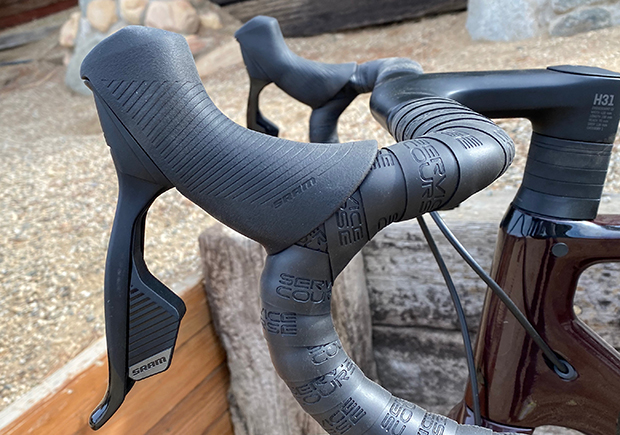
Rival eTap AXS retains most of the noteworthy tech and features of its pricier eTap AXS stablemates: 12 speeds, 10-tooth first-position cog, flat-top chain, and that great, wide-ratio gearing. There are 3 chain ring pair options: 48/35, 46/33, and 43/30. Available cassettes are 10-30 and 10-36. The 10-33 cassette is not a Rival option.
What are the differences between Rival and its upstream cousins? Rival doesn’t have ports for auxiliary shifters (to enable buttons on the drops or tops). There is also no contact-adjust on Rival hoods. However, because those ports and the contact adjust don’t exist, the Rival hood shape is a bit slimmer, which some might find an improvement.
The RED and Force eTap AXS derailleurs have’s Orbit fluid damper system, and Rival eTap AXS uses a spring clutch to keep the chain from jumping off the chain ring.
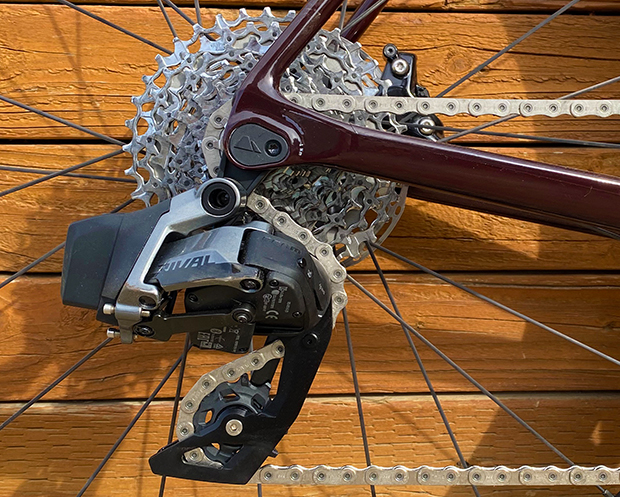
Rival eTap AXS has more metal, less carbon, it’s a metal (aluminum) crankset, and while there is a Quarq power meter option, it’s a one-sider (non-drive-side), and priced accordingly.
The 2x crankset is not direct mount – it has its own spider-based mount system – and can only accept its own chain rings. There is not an expressed do-not-use for oval chain rings, but SRAM says its Yaw front derailleur is not optimized for them. If oval chainrings were to nevertheless be used, the bolt pattern for these Rival crankets are 107mm for 46/33, and 94mm for 43/30. Note that the 43/30 follows SRAM’s other AXS motif in that there are two Q factor widths for AXS: 145mm for standard road, and 150mm for wide road. That extra 5mm is used in the 43/30 gear combo, and has to do with tire clearance. The front derailleur you would use for that 43/30 ring combo is a standalone wide version that pushes the FD cage out that extra 2.5mm on the drive side. More simply put, that 43/30 is really a gravel-specific crankset.
This is a disc-brake-only groupset, and only works on flat mounts (almost no frame maker is using post mounts these days for disc brake caliper mounting). Trek’s BB90 standard is about the only bottom bracket standard not supported by Rival eTap AXS.
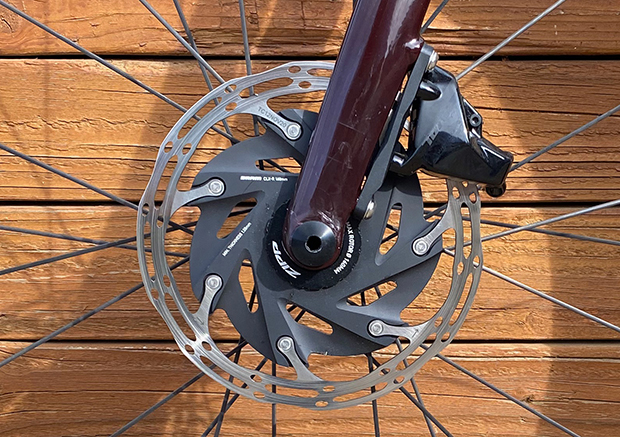
SRAM considers Rival eTap AXS eligible for that popular MTB/road mashup called the “mullet config,” using road components from the crank forward along with Eagle 1x behind the crank (RD, cassette, chain). This is a very popular 1x gravel groupset, and SRAM just weeks ago released (the more affordable) GX Eagle AXS, meaning that this config just got quite a bit cheaper, as both the electronic MTB parts and the electronic road parts took a price haircut.
What about for tri? Well… the news is good, but not universally. Yes, the FD and RD got cheaper, and the cranks, the chain, the cassette, the brake calipers and rotors. But the bar-end shifters and blip box did not get revamped or down-priced. You are using a semi-wireless system and the Blip Box remains. But the majority of the groupset did get more affordable.
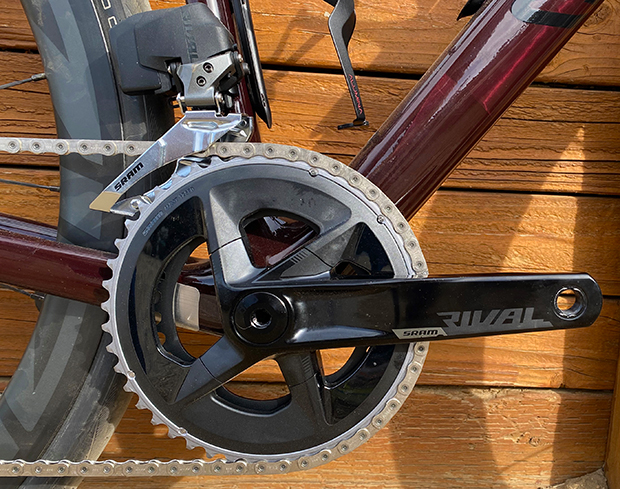
The pricing appears to me to allow for road or gravel bikes equipped with Rival eTap AXS to come in complete at a price with a “3” as the first digit, as in, $3,999 or lower. I may be wildly off. We’ll see what bike makers charge for Rival eTap AXS equipped bikes.
SRAM has a quite nice app to configure its electronic groupsets, the AXS app. Rival eTap AXS is configurable using this app, and it’s downloadable to your handheld device. Most of your basic adjusting can be done on the groupset, though, and one nice feature – also available with this new groupset – is the capacity to trim the derailleur while riding. The main functionality of the AXS app is to choose Sequential mode if you desire (analogous to Shimano’s Syncro mode), or to alter the shift paddle function to suit. That said, you can toggle in or out of Sequential mode using the paddle buttons (again, even while riding).
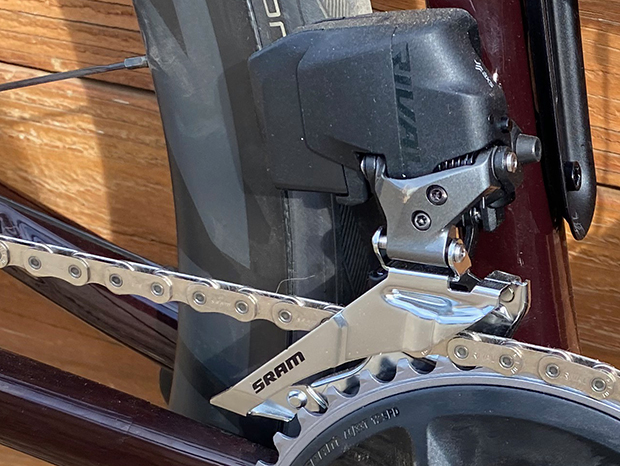
Prices for the groupset are below, and are in U.S. dollars, and are aftermarket MSRP prices, that is to say, these are the prices we consumers pay at retail. A groupset consists of: shifters, brake calipers and rotors, crankets, bottom bracket, chain, cassette, front and rear derailleurs, and the hydraulic lines. It also includes the batteries – 1 for each derailleur – and the battery charger.
2x with power meter: $1,639
2x no power meter: $1,420
1x with power meter: $1,409
1x no power meter: 1,190
There is only 1 SRAM eTap battery, so additional batteries will cost the same as they have, about $55 last I checked. One nice feature to SRAM, if you have any question about your battery life, a spare battery is light and small if you want to carry one to make extra sure (and I often do).
What I don’t know is what the mullet "groupset" cost would be. I ride this on my gravel bike, but it’s Force/GX Eagle 1x and I have heard that this new mullet "groupset" (in quotes because it's a half of one groupset and half of another) will cost somewhere in the range of $1,400. But I’m not sure. This groupset would consist of Rival eTap AXS brakes, rotors, shifters, crank and BB, along with GX Eagle rear derailleur, chain and that big 10-50 (or thereabouts) cassette.
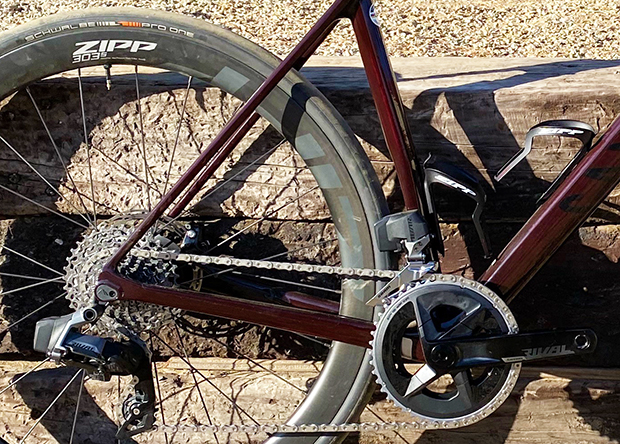
If you take in the more panoramic view, this groupset means a lot and I’ll tell you why. If you haven’t noticed, bike makers are more and more reticent to show their cables and housing. Tri certainly, but now road and even gravel (wait until you see what I'm about to show you next week), are now platforms that are increasingly going internal with their shifting and braking. It is becoming laborious to work on these bikes without significant investments in education and tools.
This became apparent in tri before it migrated to road and gravel, so we all are used to this. This is why I have been saying for a while that if you can afford it, just buy a bike that’s electronically shifted. They’re easy to build, to work on, to pack for travel (take your SRAM batteries in your carry-aboard luggage), to adjust, and chain derailments are almost a thing of the past.
There are two problems with this. First, the groupset prices have remained out of reach. Second, while the cheapest way to get these groupsets is when you get a new bike, the build kits bike makers put on these bikes are invariably upscaled if the bike has electronic shifting: if you choose the electronically shifted build you might be forced to buy a bike that also has $2,000 worth of wheels.
What SRAM eTap Rival signals is, possibly, a move to electronic shifting affordability. What we have seen is affordability of power meters. What we have not seen is that same approach directed toward electronic shifting, and toward complete bikes outfitted with this kind of shiftiung. Maybe that is about to change.
There is already a discussion thread on our Reader Forum on this new groupset. Here is more about Rival eTap AXS, which is available now.


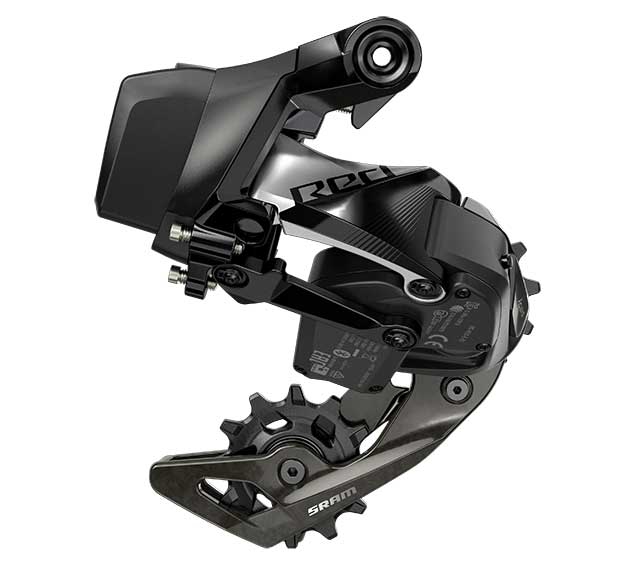
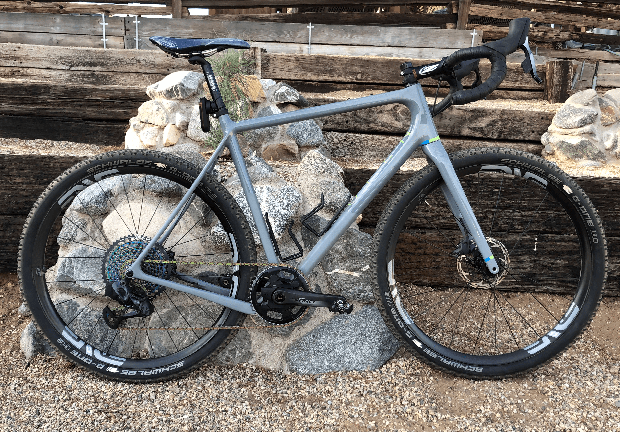
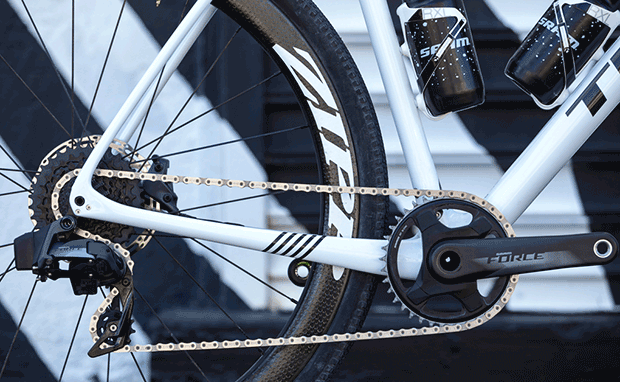
Start the discussion at slowtwitch.northend.network